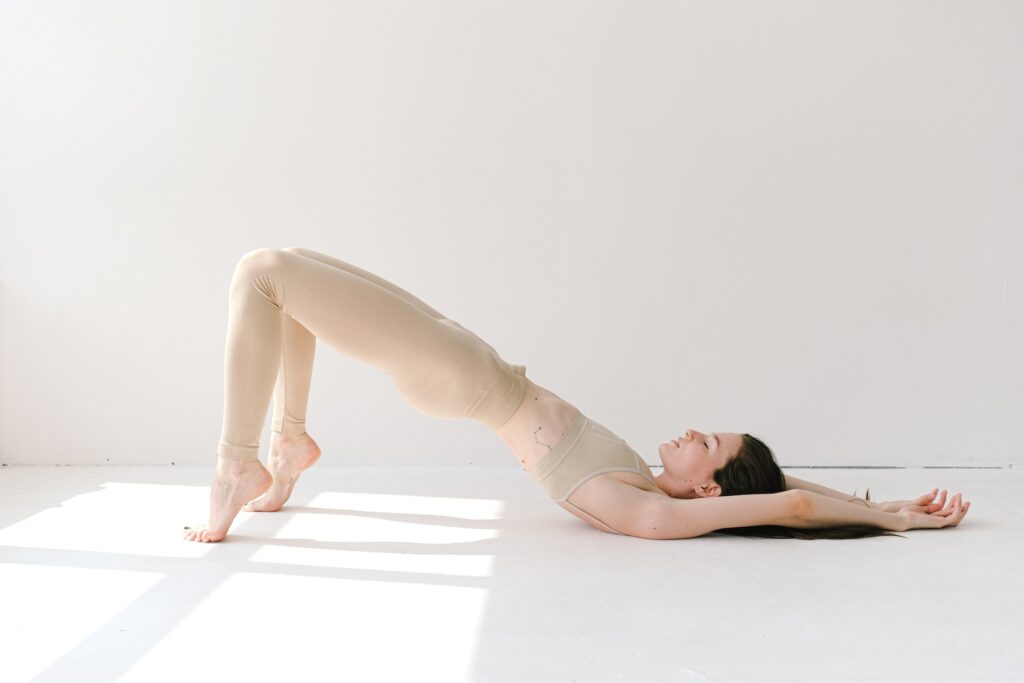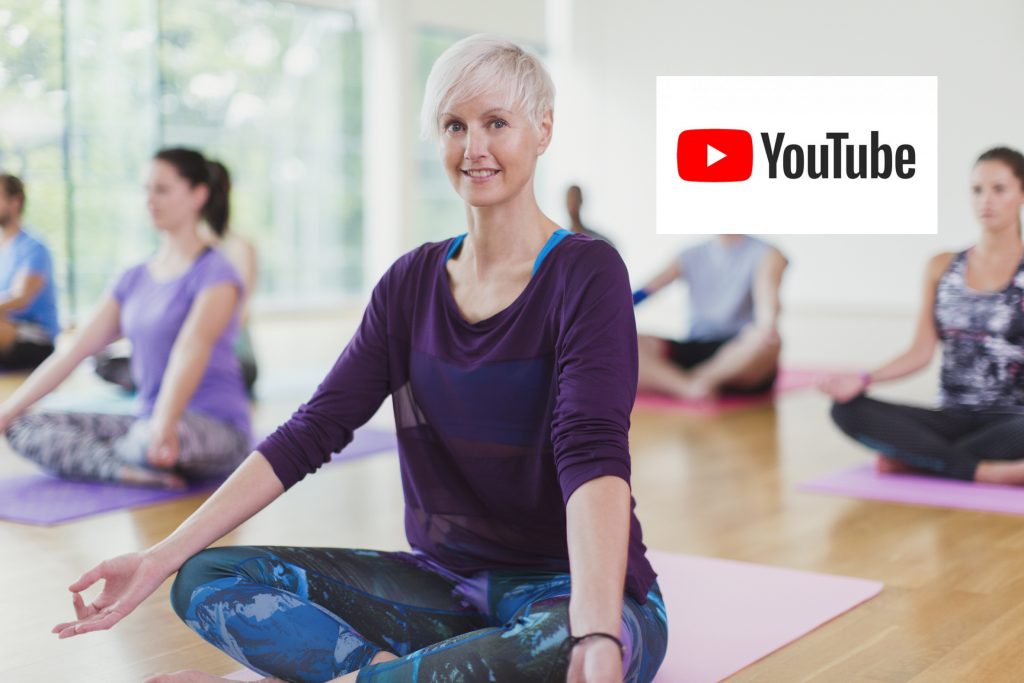The hip bridge exercise is a simple and effective move that primarily targets the glute muscles (bottom), the hamstrings, and lower back.
It is a great exercise for people of all fitness levels, and involves lifting the hips off the floor while keeping the feet planted firmly on the floor.
There are many benefits to this exercise,
- Strengthens the glutes: The glutes are the largest muscle in the body, and they play an important role in stabilising the hip joint and maintaining good posture. The hip bridge is a great way to target this muscles group and build strength in this area.
- Good for the hamstrings: The hamstrings are the muscles in the back of the thigh, and they are responsible for bending the knee and extending the hip. The hip bridge helps to strengthen the hamstrings and improve flexibility in the back of the leg.
- Good for the core: The core is the group of muscles that stabilize the spine and pelvis. The hip bridge helps to strengthen the core and improve balance and coordination.
- Posterior chain development: The hip bridge targets the posterior chain, which refers to the muscles on the backside of the body, including the glutes, hamstrings, and lower back. Strengthening these muscles can contribute to improved posture, reduced risk of injury, and enhanced performance in activities such as running, jumping, and lifting, or simply just holding the body upright.
Many people nowadays spend so much time sitting that a lot of strength is lost in these muscles and as a result, doing simple tasks such as walking up and down stairs, or sitting up and down can become challenging.
To do a hip bridge, do the following steps:
- Lie on your back with your knees bent and feet flat on the floor. Keep your arms relaxed by your sides.
- Engage your core muscles by gently drawing your belly button toward your spine.
- Press your feet into the floor and exhale as you lift your hips off the ground, pushing through your heels.
- Keep your glutes and core engaged as you raise your hips until your body forms a straight line from your knees to your shoulders.
- Hold the top position for a second or two, focusing on squeezing your glutes.
- Inhale as you slowly lower your hips back down to the starting position.
You can make the hip bridge more challenging by adding in arm rises, lifting the heels, extending a leg in the air, or maybe stepping the feet in and out. Some people also add weights, such as a barbell or dumbbells, to your hips, though take care if attempting this variation.

Here are some tips for doing the hip bridge correctly:
- Engage your core. This is the most important part of the exercise. When you engage your core, you help to stabilise your spine and pelvis, which prevents you from overextending your back.
- Keep your back in a neutral alignment, which means neither arching or flattening the spine too much in either direction. Do not arch your back as you lift your hips. This can put stress on your spine.
- Slow and controlled movements. Use slow and controlled movements to ensure that you are using the correct muscles.
- Repeat 10-15 times. Start with 10-15 repetitions and gradually increase the number of repetitions as you get stronger.
If you have any pain in your back or hips, stop the exercise and consult with a doctor or physical therapist.




